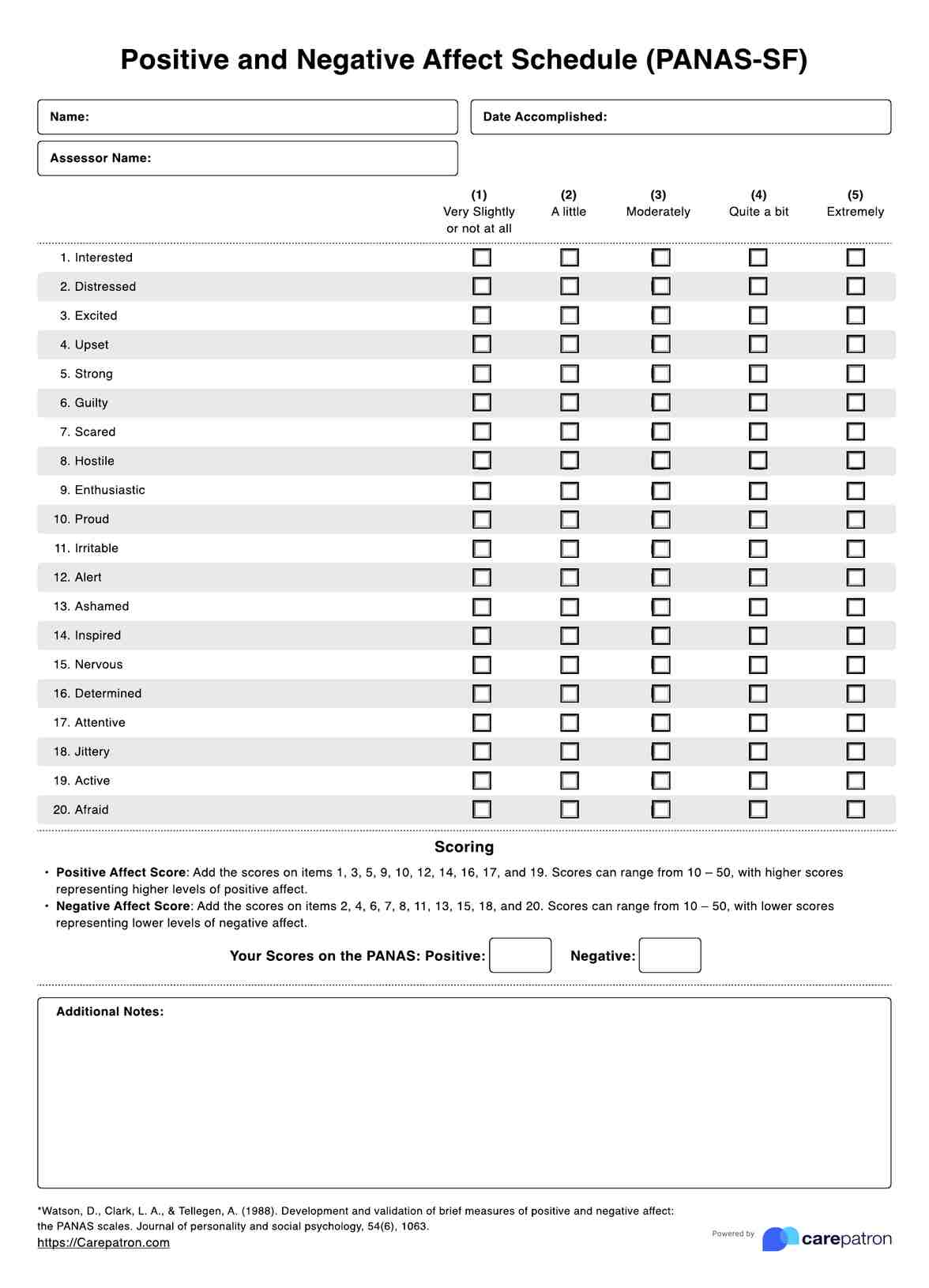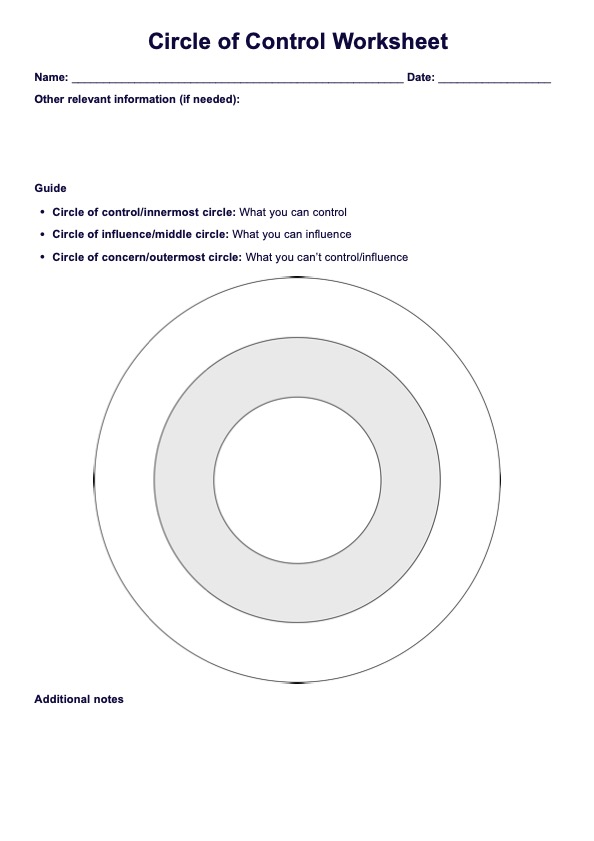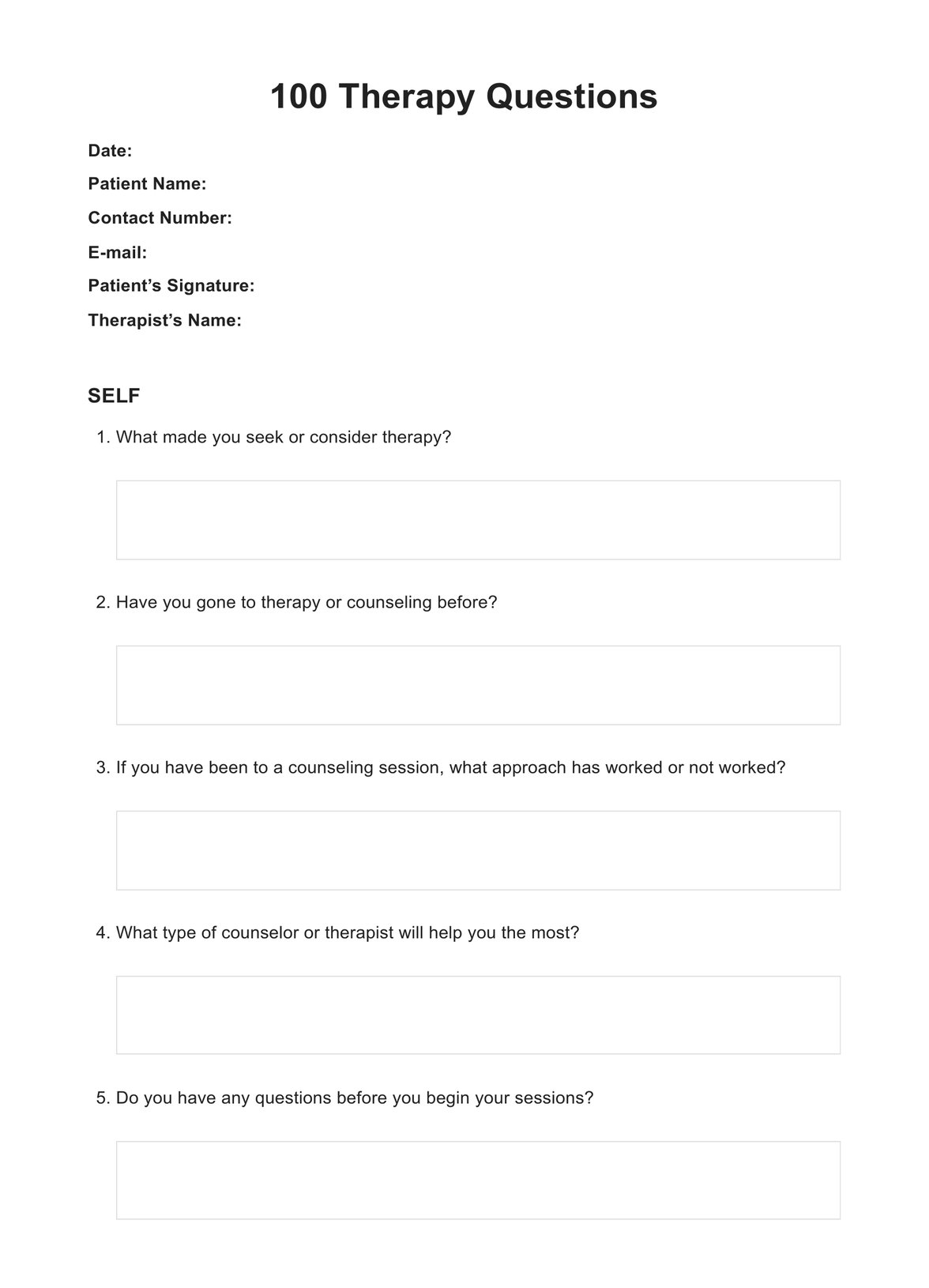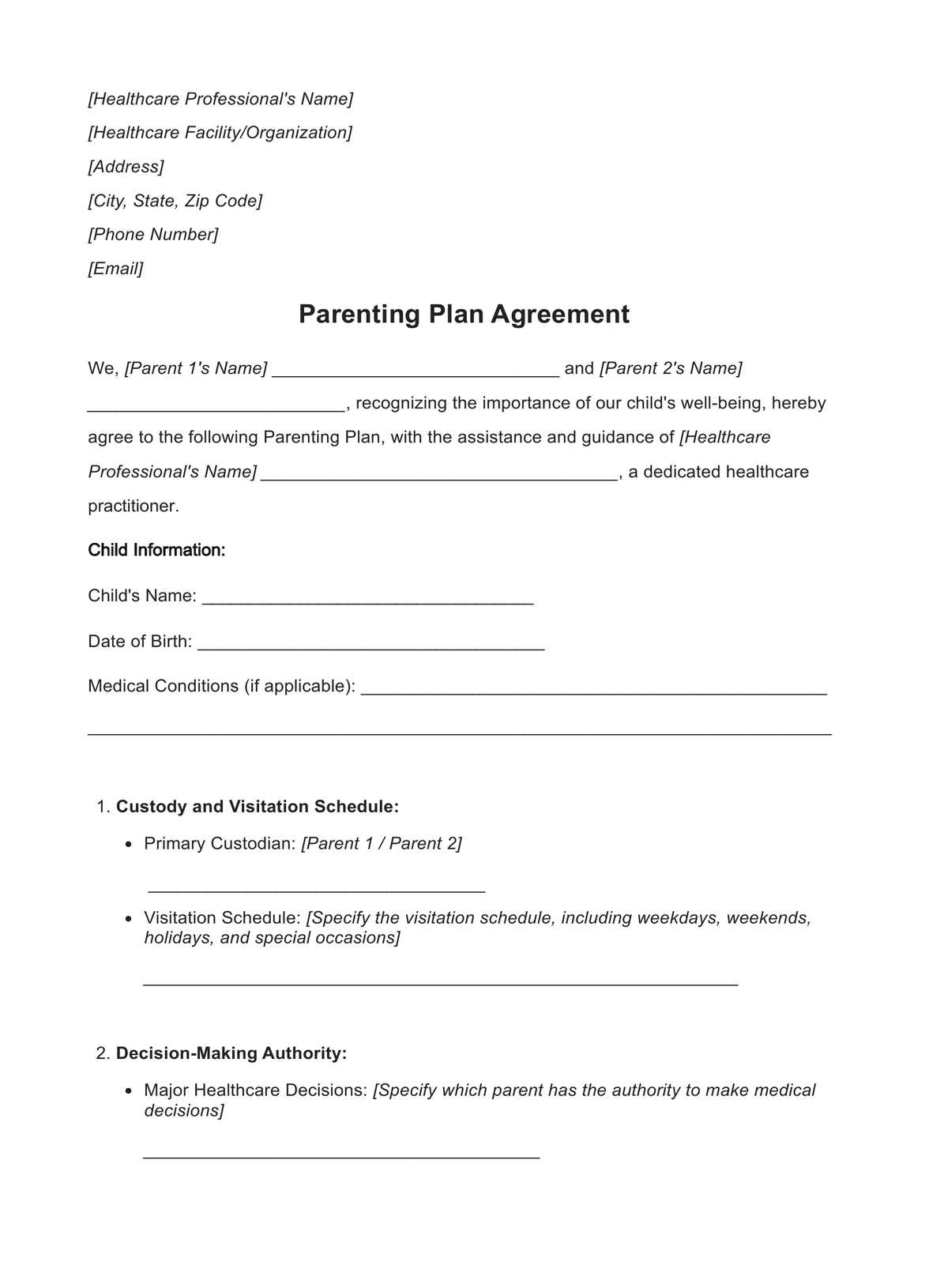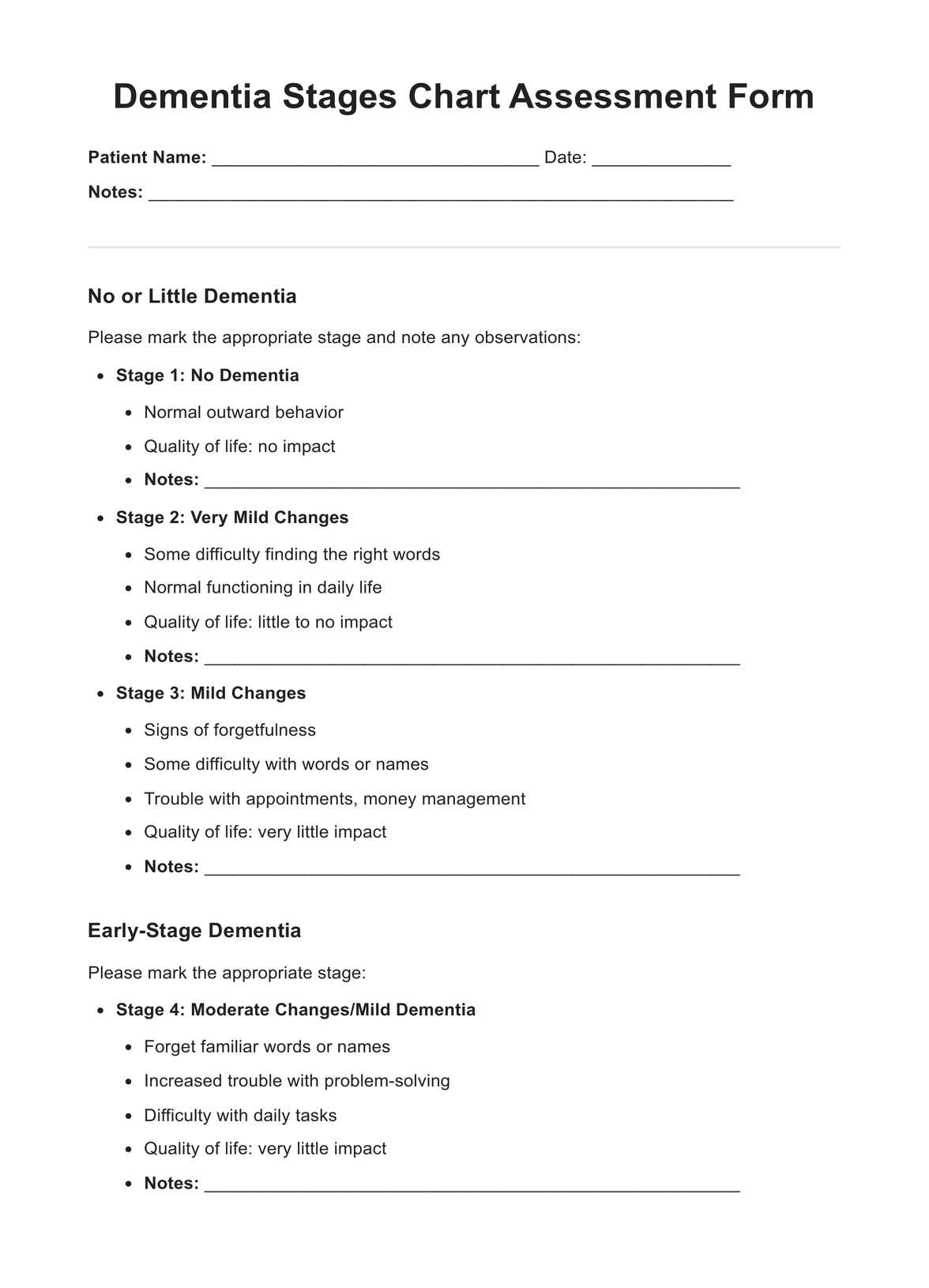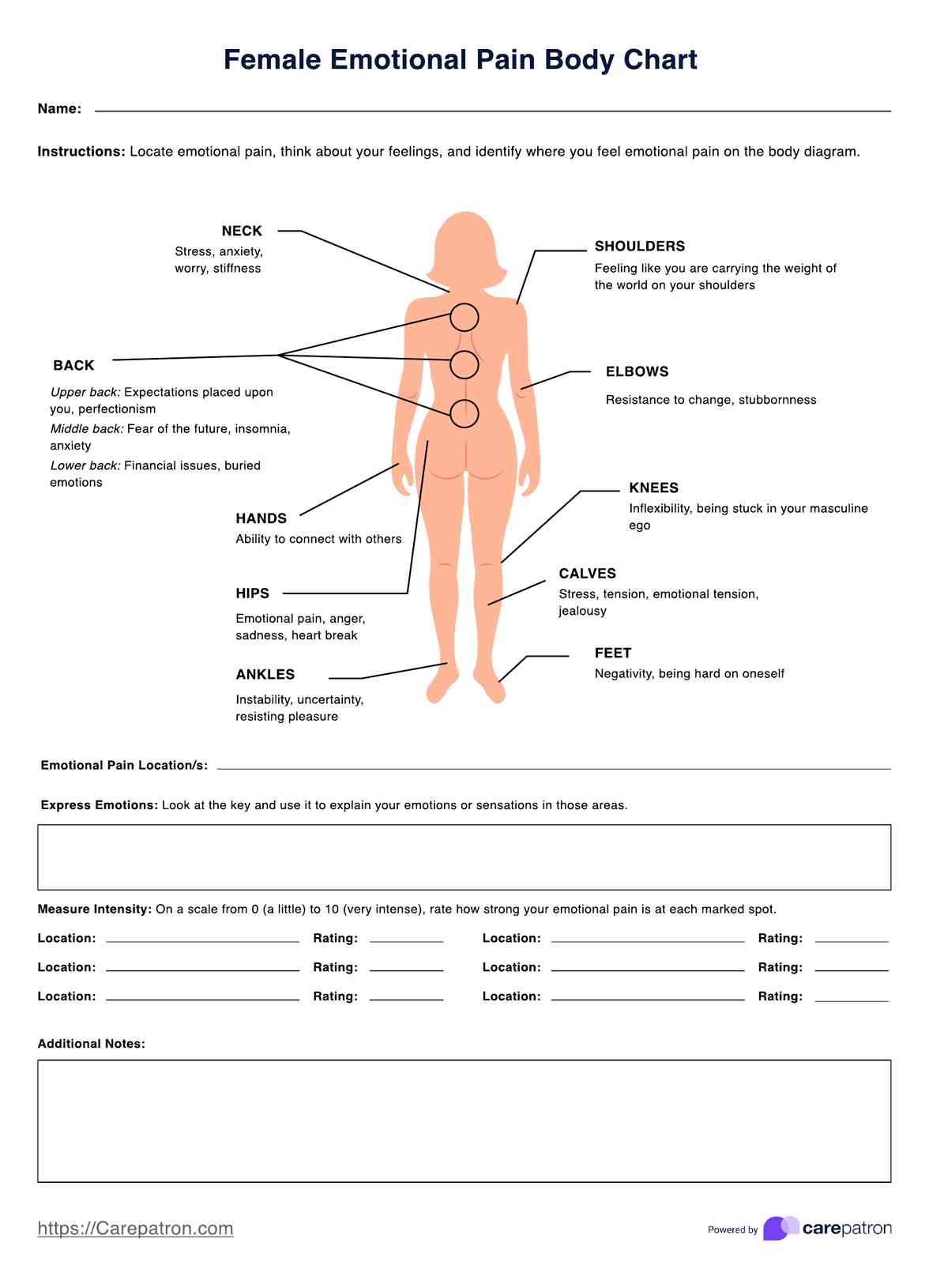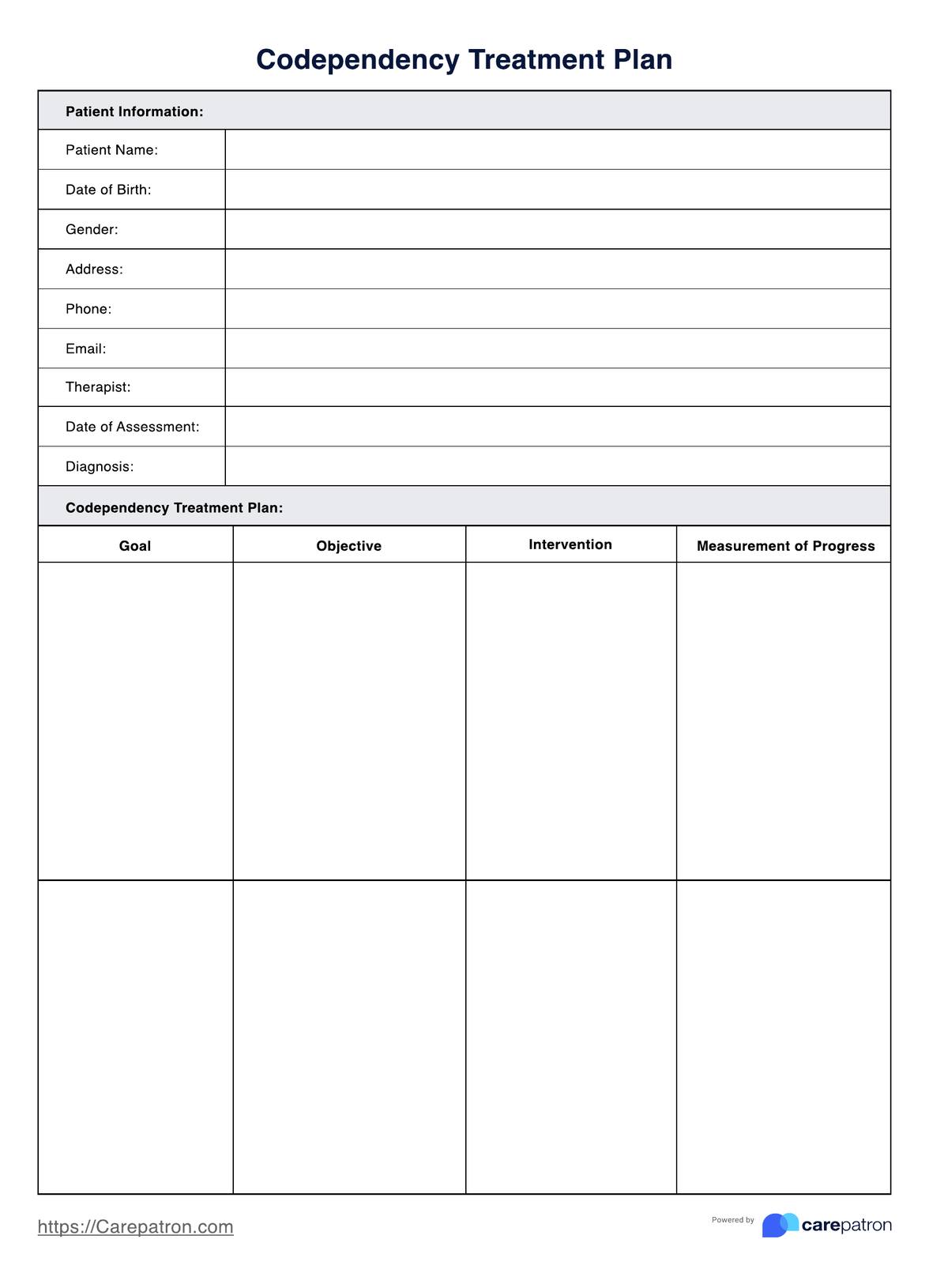Imagery-based Exposure Worksheet
Transform your mindset with our powerful Imagery-based Exposure Worksheet. Overcome fears and unlock your potential today. Experience the change!


What is Exposure Therapy?
Exposure therapy is a highly effective psychological treatment that helps individuals confront and overcome their fears, anxieties, and traumas. It is rooted in the principles of behavioral psychology and is commonly used to treat anxiety disorders, phobias, and post-traumatic stress disorder (PTSD).
Exposure therapy systematically exposes the person to the feared stimulus or situation in a safe and controlled environment. By repeatedly facing these distressing triggers, individuals can gradually learn to manage their emotional responses and reduce anxiety.
This typically involves collaboration between the therapist and the client. First, the therapist works closely with the client to identify specific fears or triggers causing distress. Then, they create a hierarchy of exposure, ranking situations from least to most anxiety-provoking.
The therapist guides the client through a series of exposures, starting with the least anxiety-inducing scenario. As the person becomes more comfortable and their anxiety diminishes, they progress to more challenging situations. This step-by-step approach, known as systematic desensitization, allows for gradual acclimatization to the feared stimuli, making the process more tolerable and effective.
Through repeated exposures, individuals often experience habituation, where their anxiety response decreases over time. They also learn that their fears are largely unfounded, challenging negative thought patterns associated with the phobia or trauma.
Exposure therapy empowers individuals to develop coping strategies, build resilience, and regain control over their lives. It fosters long-lasting behavioral changes, improving daily functioning and overall well-being. While exposure therapy can be challenging, the outcomes can be life-changing, allowing individuals to break free from their grip of fear and anxiety. As with any therapy, the process is tailored to each individual's needs, ensuring a personalized treatment experience.
If you are looking for other Exposure Therapy resources, feel free to check out this video:
Imagery-based Exposure Worksheet Template
Imagery-based Exposure Worksheet Example
How to use this Imagery-based Exposure Worksheet?
The Printable Imagery-based Exposure Worksheet is a valuable tool designed to assist healthcare practitioners in conducting exposure therapy with their clients. This worksheet aims to help clients confront and manage their fears, anxieties, and phobias by gradually exposing them to distressing scenarios through guided imagery. As a healthcare practitioner, you can use this worksheet to facilitate the therapeutic process and support your clients in their journey towards emotional resilience and growth.
Step 1: Introduce the Worksheet
Start by explaining the purpose and benefits of the Imagery-based Exposure Worksheet to your client. Emphasize that exposure therapy is an evidence-based treatment for anxiety disorders and phobias and that the worksheet will aid them in systematically confronting their fears.
Step 2: Familiarize Clients with the Template
Walk your client through the different sections of the worksheet, such as Scenario 1, Scenario 2, Scenario 3, Scenario 4, Reflection, Coping Strategies, Positive Affirmations, and Final Thoughts. Explain the importance of each section and how they will contribute to the exposure process.
Step 3: Conducting the Imagery-based Exposure
Guide your client through each scenario, from the least distressing (Scenario 1) to the most distressing (Scenario 4). Encourage them to vividly imagine the situations while monitoring their distress levels before and after each exposure. Remind them to use the provided distress rating scale (0-10) for assessment.
Step 4: Reflection
After completing each scenario, have your client reflect on their experience. Ask them to write down any thoughts, emotions, or physical sensations they noticed during the exercise. This step promotes self-awareness and encourages clients to explore their reactions.
Step 5: Coping Strategies
Discuss coping strategies with your client that they can employ during the exposure exercises. Encourage using deep breathing, grounding techniques, or visualization of a safe place to manage anxiety. Review the effectiveness of these strategies with your client during the reflection phase.
Step 6: Positive Affirmations
Work with your client to develop positive affirmations related to their journey of overcoming fears. Encourage them to repeat these affirmations regularly to reinforce their self-belief and resilience.
Step 7: Final Thoughts
In this section, have your client summarize their overall experience with the Imagery-based Exposure Worksheet. Encourage them to express any insights gained, progress made, and challenges faced. Use this opportunity to provide positive reinforcement and support.
Using the Printable Imagery-based Exposure Worksheet can enhance your exposure therapy sessions and contribute to the positive outcomes of your client's treatment. Remember to approach this process with sensitivity and compassion, respecting each client's unique pace and readiness for confronting their fears. Regularly monitor their progress and adjust the exposure exercises to ensure a successful and empowering therapeutic journey.
When would you use this Imagery-based Exposure Worksheet?
The Imagery-based Exposure Worksheet template is a valuable resource used by various healthcare professionals, such as psychologists, therapists, counselors, and mental health practitioners, when working with clients who experience anxiety disorders, phobias, or post-traumatic stress disorder (PTSD). This worksheet is particularly effective in exposure therapy, an evidence-based treatment approach to address irrational fears and anxieties.
Anxiety Disorders and Phobias:
The worksheet is most appropriate when working with individuals suffering from anxiety disorders or specific phobias. The worksheet helps clients confront their fears in a safe and controlled environment by systematically exposing them to distressing scenarios through guided imagery. This exposure process aids in reducing anxiety levels and breaking the cycle of avoidance and empowers clients to regain control over their lives.
Post-Traumatic Stress Disorder (PTSD):
For clients with PTSD, the Imagery-based Exposure Worksheet can be employed to address traumatic memories and associated triggers. Through guided imagery, clients can revisit distressing events in a controlled manner, allowing them to process their emotions and desensitize their reactions to traumatic stimuli.
Individualized Treatment Plans:
Healthcare professionals can adapt the worksheet to suit each client's unique needs and fears. The exposure scenarios can be tailored to target specific triggers, such as public speaking, flying, or enclosed spaces, making the worksheet versatile for various anxiety-related conditions.
Gradual Exposure:
The worksheet facilitates a gradual approach to exposure therapy, allowing clients to start with mildly anxiety-provoking scenarios and progress toward more distressing situations at their own pace. This gradual exposure minimizes overwhelm and increases the likelihood of successful outcomes.
Empowerment and Self-Reflection:
Through the reflection section, clients can gain insight into their thoughts, emotional responses, and coping strategies during exposure exercises. This self-awareness fosters empowerment and encourages clients to develop effective ways of managing anxiety in real-life situations.
Reinforcing Resilience:
Including positive affirmations encourages clients to foster a sense of resilience and belief in their ability to overcome fears. Repeating these affirmations regularly can boost confidence and motivation throughout the therapeutic process.
What are the benefits of using this Imagery-based Exposure Worksheet?
Benefits of the Free Imagery-based Exposure Worksheet:
Evidence-Based Approach
The Imagery-based Exposure Worksheet is based on exposure therapy, a well-established and evidence-based psychological treatment for anxiety disorders, phobias, and PTSD. Research has consistently shown exposure therapy to effectively reduce anxiety and improve overall well-being for individuals with these conditions.
Systematic Desensitization
The worksheet follows a systematic desensitization approach, where clients are gradually exposed to distressing scenarios in a controlled manner. This process allows clients to confront their fears at a manageable pace, reducing anxiety over time.
Versatility and Customization
Healthcare professionals can customize the worksheet to address individualized fears and triggers. It allows practitioners to tailor the exposure scenarios to target specific anxieties, making the treatment more effective and relevant to each client's needs.
Promotes Self-Awareness
Through the reflection section, clients can gain insights into their thoughts, emotions, and physical sensations during exposure exercises. This self-awareness helps clients understand their anxiety responses better, fostering a sense of empowerment and control.
Enhances Coping Skills
The worksheet incorporates a coping strategies section, encouraging clients to identify and employ effective coping mechanisms during exposure exercises. This practice equips clients with valuable tools to manage anxiety during therapy sessions and in real-life situations.
Positive Reinforcement
Including positive affirmations in the worksheet reinforces clients' resilience and self-belief. Regularly repeating these affirmations can boost confidence and motivation, facilitating progress and a sense of achievement.
Commonly asked questions
Healthcare professionals, such as psychologists, therapists, counselors, and mental health practitioners, can use the worksheet with clients experiencing anxiety disorders, specific phobias, or post-traumatic stress disorder (PTSD).
The worksheet promotes gradual exposure, helping clients confront their fears at a manageable pace. It fosters self-awareness, encouraging clients to explore their emotional responses and thought patterns. Including coping strategies empowers clients to manage anxiety effectively, while positive affirmations reinforce resilience and motivation.
While the specific Imagery-based Exposure Worksheet may not have dedicated research, exposure therapy generally has a substantial evidence base supporting its efficacy in treating anxiety disorders and phobias. Numerous studies have demonstrated the positive outcomes of exposure therapy in reducing anxiety and improving overall well-being for clients.
Healthcare professionals can tailor the worksheet to address each client's fears and triggers. The exposure scenarios can be customized to target specific anxieties, ensuring personalized and effective treatment plans.


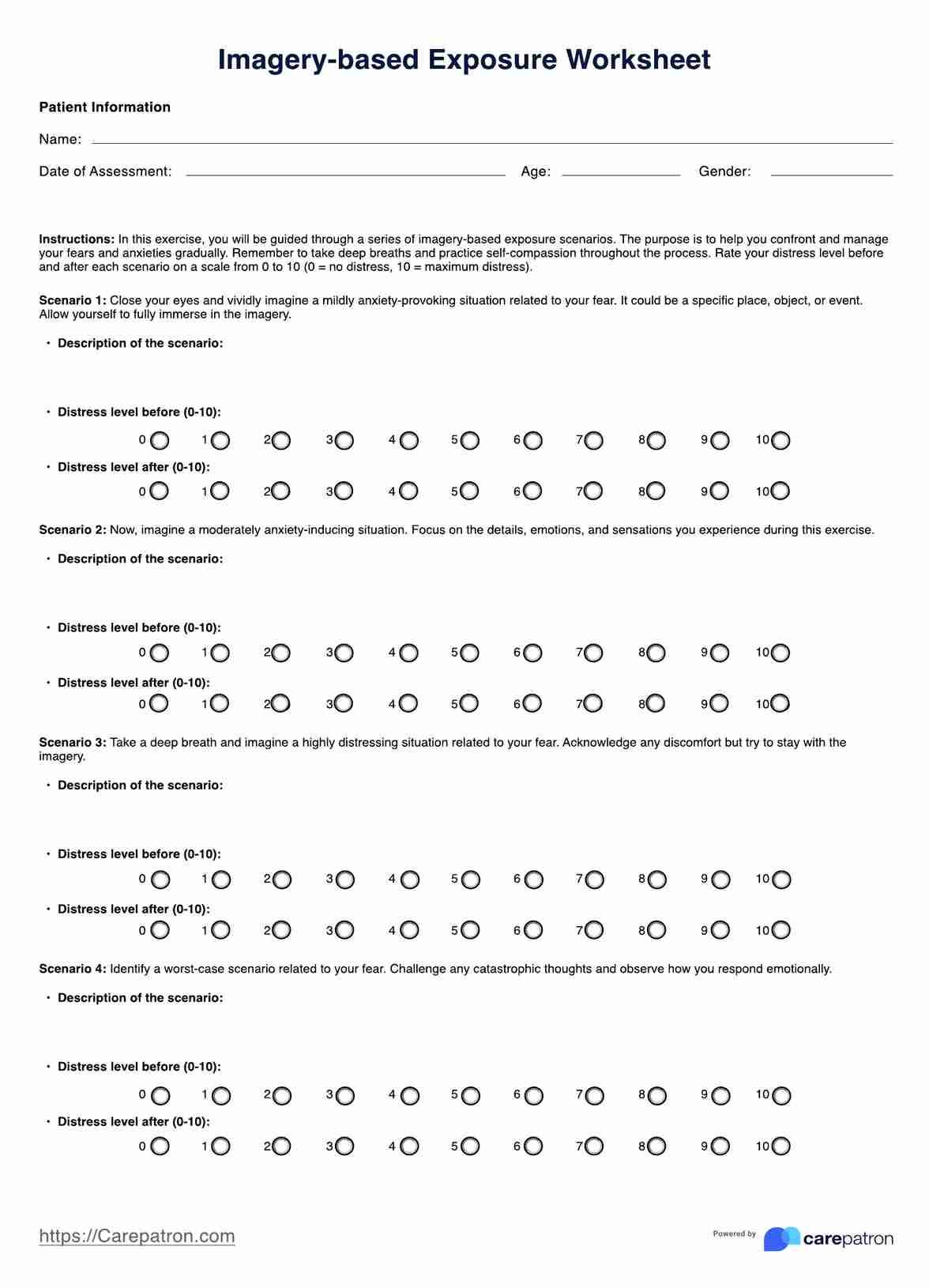
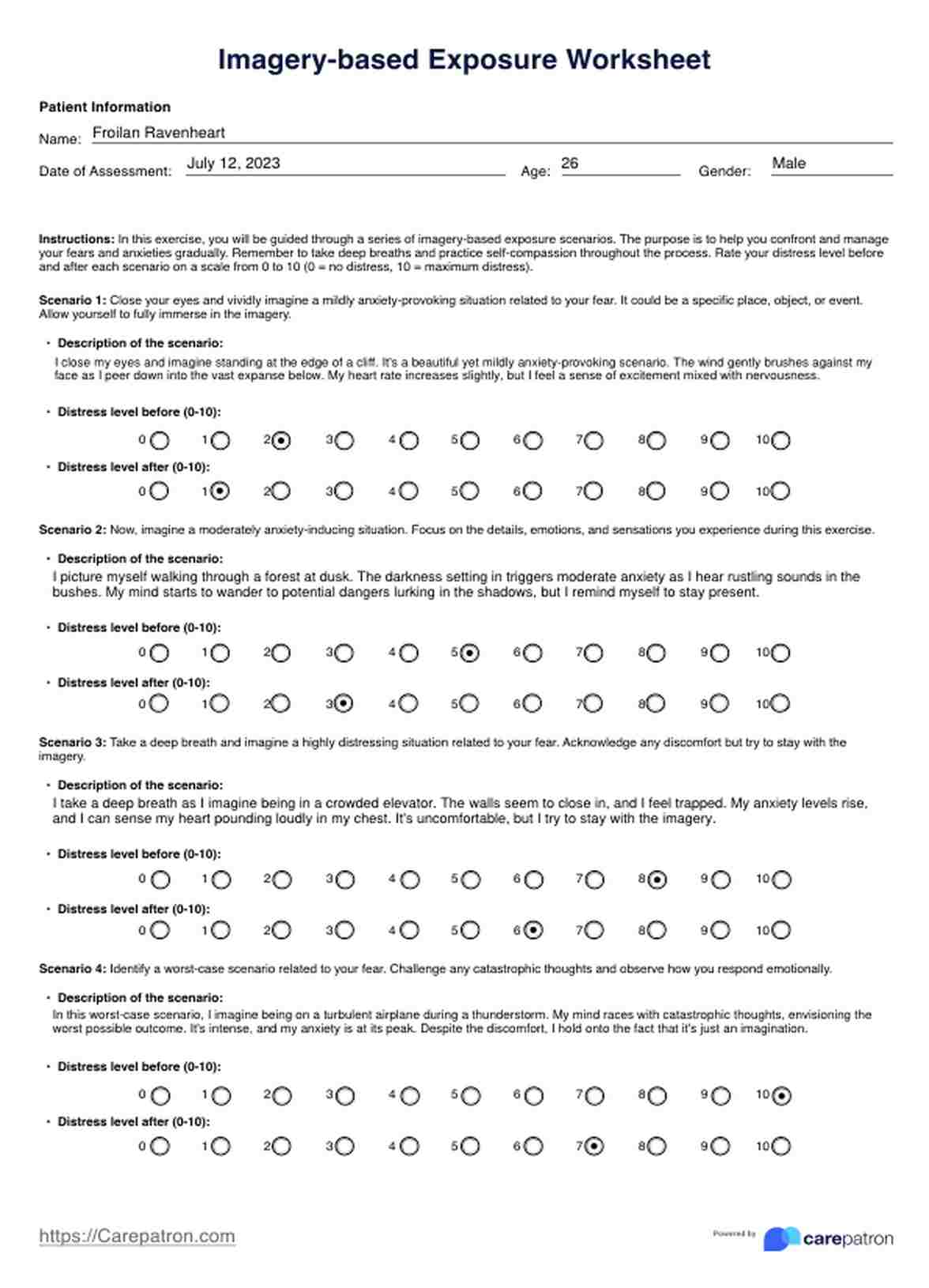














-template.jpg)






















































































